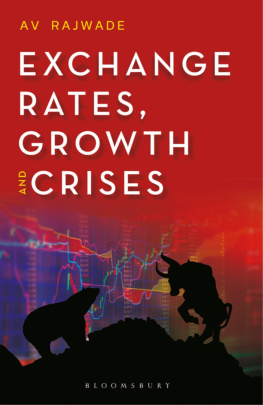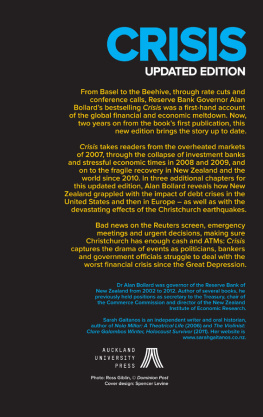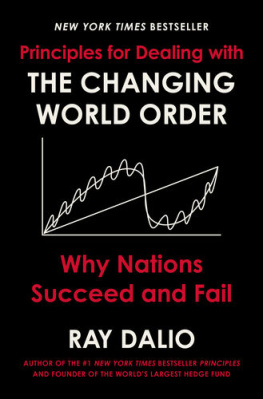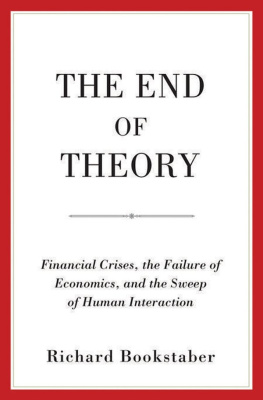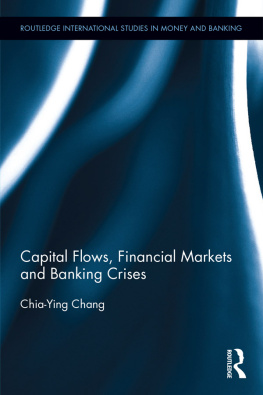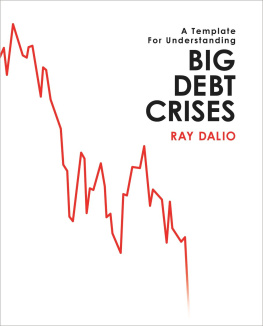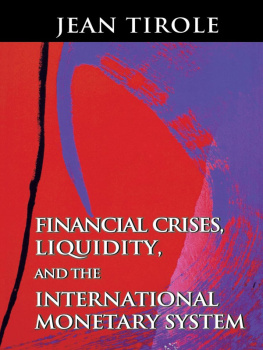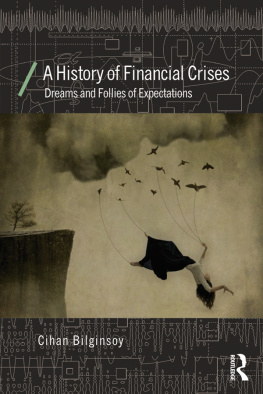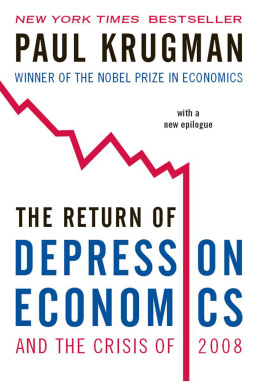A Brief History of Doom
A Brief History of Doom
Two Hundred Years of Financial Crises
Richard Vague

Copyright 2019 University of Pennsylvania Press
All rights reserved. Except for brief quotations used
for purposes of review or scholarly citation, none of this
book may be reproduced in any form by any means
without written permission from the publisher.
Published by
University of Pennsylvania Press
Philadelphia, Pennsylvania 19104-4112
www.upenn.edu/pennpress
Printed in the United States of America
on acid-free paper
10 9 8 7 6 5 4 3 2 1
A catalogue record for this book is available from the
Library of Congress.
ISBN 978-0-8122-5177-7
CONTENTS


In the mid-2000s, I was a CEO of a large consumer lending bank and had been a banker since the late 1970s. Id seen my share of financial chaos. My most formative experience was the banking crisis in the Southwest in the 1980s when oil prices collapsed. It was my job to know risk.
We were national credit card lenders, but as a routine part of our credit and risk analysis, wed look at loan volumes in many different consumer sectors. Private debt, the subject of this book, means the whole range of business and personal debt, including credit card debt, commercial real estate loans, energy sector loans, student loans and, by far the biggest slice of the private debt pie, mortgages.
In 2005, I began to notice that mortgage sector growth was extraordinary, having accelerated from $6 trillion in mortgage loans to $9 trillion in just three years. It was a chilling discovery. Its difficult to exaggerate the enormity of that kind of increase. Unprecedented. Alarming. To create a sense of scale, credit card debt at this time totaled a comparatively small $730 billion.
With that kind of growth, we could surely anticipate that there would be major delinquency problems in mortgages. I wasnt a mortgage lender, but I assumed that this magnitude of delinquency would cascade into my business too. We discussed this with other lenders and economists, who mostly maintained that we shouldnt worry about the growth in mortgages because consumer asset valuesthat is, the value of stocks and houseswere even further ahead.
This was, in part, why I left the lending industry. Id come to see that the view from Wall Street, the corner office, the Federal Reserve, the ivory tower, and Congress is markedly different from the experience of those who borrow and lend. From my perspective, with runaway mortgage debt like this, we were in trouble no matter what. Yes, things seemed fine for the moment, but if the value of houses dropped, then much of the debt would go bad. And even if house values remained high, debt service for many would be so high that they would be forced to sell those houses to pay the debt.
Although I moved on, I never forgot a hunch that Id been developing about private debt: if wildfire private debt growth was behind the 2008 economic crisis, then maybe it lurked behind other crises, too, including the Great Depression. So I went to find private debt data on the Depression, a far more challenging task that I had imagined, and my hunch was confirmed. In the late 1920s there had been an explosive, though rarely mentioned, growth in private debt, right before the all-too-frequently invoked stock market crash of October 1929.
Maybe this was a bigger factor than generally believed.
I began to think about Japans crisis in the 1990s, and when I retrieved data, I saw the very same pattern: runaway growth in private debt had come before the bust and the fall. I was hooked on the project and wanted to see whether my hypothesis applied more broadly. So I convened a team of researchers and analysts to assist in this quest. I also began talking to economists at every opportunity. By now I have spoken to hundreds. These conversations have been invaluable but also troublingly consistent in one regard: for most, private debt is a secondary or peripheral topic and barely mentioned. In fact, private debt wasnt even a component of most economic forecasting models before 2008.
That shouldnt have surprised me. I had been a lender for over three decades, had sat on the boards of both Visa and MasterCard, had aggregate industry statistics on debt at my fingertips, and had reviewed hundreds of economic forecasts. How could I not have known this? Its a devastating paradox: while private debt is a necessary component of an economy, rapid private debt growth may be the most crucial variable explaining financial crisesand also the most overlooked explanatory factor.
As my team and I embarked on years of research, I pondered why other economists hadnt emphasized private debt. Perhaps its because the generation of economists in positions of power and prestige in 2008 had grown up during that prolonged period from 1950 to 1980 when private debt was so low that it truly wasnt much of a factor in economic outcomes. Perhaps its because they minimize or neglect the role of private debt in creating new money and thus heightening demand. Another factor might be the outsized influence of the Federal Reserve itself, which historically has not made loans directly to the private sector and thus tends to view the world through the lens of government debt and reserve accounts. Finally, private debt may be overlooked because there is a constituency with the wealth, means, and incentive to promote an unfettered laissez-faire outlook, and there is no well-funded constituency to promote an alternative viewpointnamely, that unfettered private debt can and often does get out of control.
If readers take one lesson from this book, I hope it is this: when it comes to financial crises, were not in the grip of unseen and hopelessly complex forces. Such crises are neither inevitable nor unpredictable. Runaway private debt and the resulting overcapacity does a better job than any other variable in explaining and predicting financial crises. It is our job to heed those danger signs.
Imagine a future country of Oz, in the year 2030. It was in this imaginary country that citizens became captivated by a radical new inventionheliocars. These cars ran on stored sunlight, could be constructed out of ultralight material, and traveled on monorails at four hundred miles per hour.
Entrepreneurs scrambled to form dozens of companies that built these monorails, which promised to revolutionize travel. These companies were all heavy users of cash since they needed to buy air rights and right-of-ways, build monorails and heliocars, hire operators and technicians, market the service to customers, and more. Stock sales alone werent sufficient to provide the needed capital, so these companies looked to borrow.
Thats where infrastructure banks (IBs) came in. They had been authorized by the Ozian Parliament twenty years earlier to aid capital-intensive, long-term infrastructure projects. Unlike conventional banks, IBs had minimal capital requirements and key tax advantages, and could obtain funding through the tax-free infrastructure bank bonds secured by their loans. They were regulated by the Ministry of Commerce, which had a lighter regulatory touch than the conventional bank regulator, the Central Bank of Oz.
Next page

